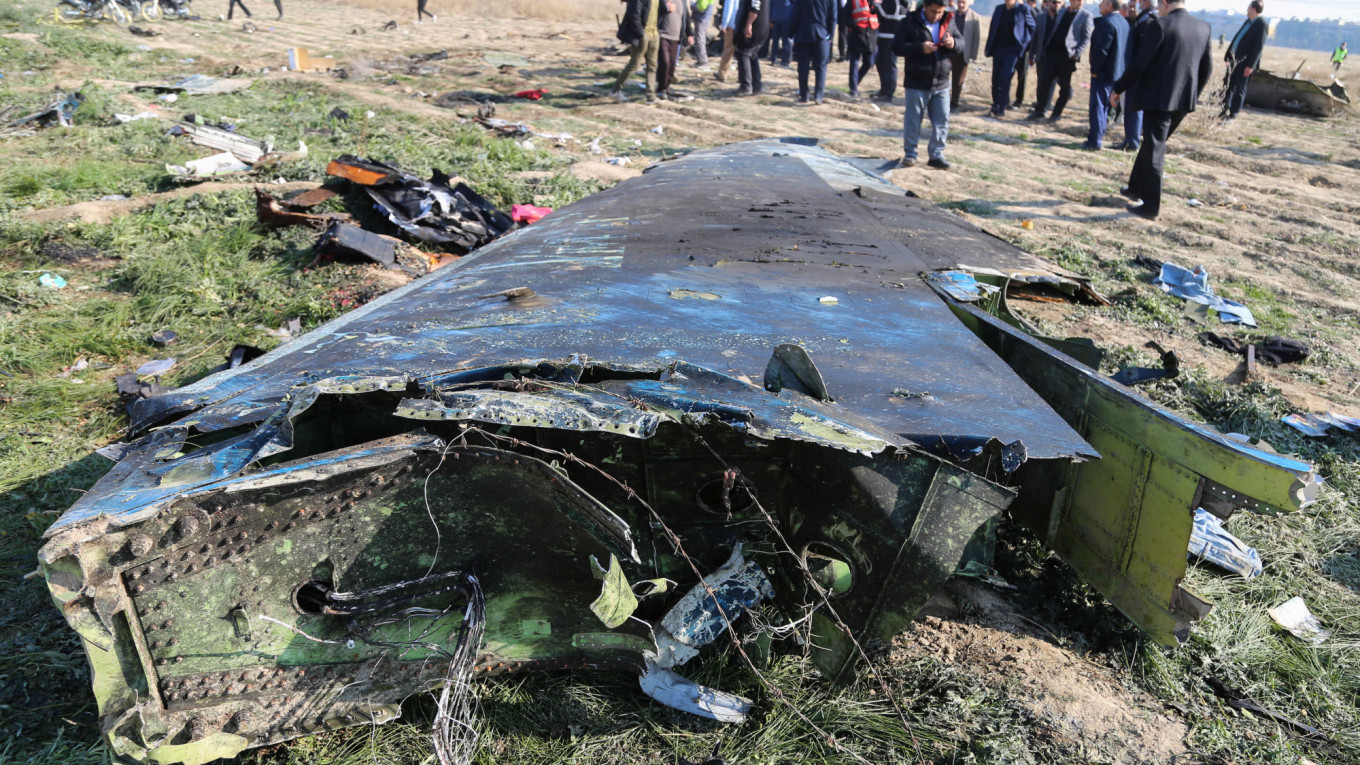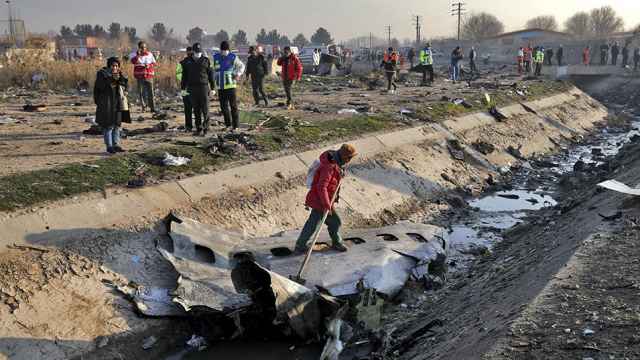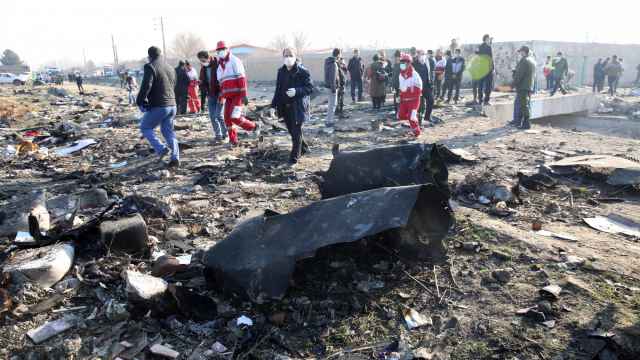Canada said on Thursday that a surface-to-air missile brought down a Ukrainian airliner in Tehran, while the Ukrainian government said it was investigating reports of debris from a Russian-made Tor-M1 missile.
The Tor, also called the SA-15 Gauntlet by NATO, is a short-range "point defense" system that integrates the missile launcher and radar into a single tracked vehicle.
It is designed to be mobile and lethal against targets at altitudes up to 6,000 meters (20,000 feet) and at ranges of 12 kilometers (7.5 miles), according to the Federation of American Scientists, which researches and analyzes "catastrophic threats to national and international security."
Military aircraft and cruise missiles — which the Tor system is designed to destroy — typically plot their courses to avoid being spotted on radar. They are equipped with systems such as chaff, which confuses radar, and flares, which act as decoys for heat-seeking missiles.
The jet that crashed Wednesday, Ukraine International Airlines Flight 752, a Boeing 737-800, would have filed a flight plan and had no defensive features.
It was unlikely the flight crew had time to react to any missile, said Michael Duitsman, a research associate at the Middlebury Institute of International Studies.
"They probably wouldn't have even seen it coming," Duitsman said. "Right after takeoff, the pilots were probably preoccupied with other things."
To attack a target, the Tor operator must identify it on the radar screen and direct the missile to launch.
Commercial air flights have transponders — radio transmitters that broadcast their identity, speed and altitude at an internationally agreed frequency. There were several other civilian aircraft nearby when Flight 752 crashed just a few kilometres from the airport.
All of those aircraft would have been visible on the radar screen of the Tor battery as well as civilian radar at the airport.
Identifying the friendlies
A former European air defense officer, who now works on missile defence technology, said that ideally, flight plans and transponder codes of all scheduled civilian flights would be shared with military units stationed near an airport.
That allows the missile battery operator to correlate each object on radar with a flight plan and transponder code.
"Shooting down a hostile aircraft is easy," said the officer, who declined to be identified because of the sensitivity of the issue.
"It's identifying the aircraft and not shooting down friendlies that are the challenges."
Tor missiles are guided by radar and fly at almost three times the speed of sound. That means that if launched at a target 5 km (3 miles) away, they will arrive within about five seconds.
They have a small warhead — about 15 kilograms (33 lb) of high explosive — but are designed to spray fragments of shredded metal, like bullets, into a target upon detonation.
The Tor is among the most modern air defense systems Iran has, Duitsman said, and can attack two targets at once with up to two missiles each. When Iran purchased them from Russia in the mid-2000s, "the capability was such that at the time the U.S. was concerned about the sale," he added.
Iran fields "small numbers" of Tor systems, the Center for Strategic and International Studies said in a report last year.
A U.S. official said that data showed the plane was airborne for two minutes when the heat signatures of two surface-to-air missiles were detected.
That was quickly followed by an explosion in the vicinity of the plane, the official said. At least one video circulating from the night of the crash shows a burning aircraft crashing into the ground near Tehran.
The New York Times published what it said was a verified video that appeared to show an Iranian missile hitting a plane near Tehran airport.
Iran denied that the airliner had been hit by a missile.
Riki Ellison, a defense expert and founder of the Missile Defense Advocacy Alliance, said it would have been impossible to divert the missiles after launch, even if the ground operators realized their error.
"Once you shoot those things, it's over," Ellison said.






